Marketing tips in short food supply chains
AIMS OF CHAPTER/ABSTRACT
What is marketing? Putting the right product in the right place, at the right price, at the right time.
The purpose of this chapter is to provide the rural facilitator with adequate knowledge about the marketability of smallholder food products. It provides clues in interpreting market expectations, reaching customers, marketability of products, sales channels, and provides traceable practical ideas for the sales process.
KEYWORDS
marketing, product, price, promotion, brand, food safety
LEARNING OBJECTIVES
In a short supply chain, the producer is very self-reliant: he/she must recognize the needs of customers, the market, know the legal regulations in the field of packaging, food safety, environmental protection, be able to innovate the product, be able to serve the customer directly and online, and needs to shape his image. The rural facilitator can help him/her in this difficult process.
Communication and marketing are crucial in direct sales however, farmers often miss these competencies or they miss time to do so, that is why SFSC animators can play an important role in the organization of common or private communication.
What sort of animator, in which short-chain types can use it? We provide the facilitator with a curriculum that he/she can use in both direct sales and online commerce to help guide smallholders in marketing.
The present chapter is giving practical tips on:
- how to create the identity of a food business
- how to reach out to potential customers
- how to treat customers, by presenting at least 2 best practices for intermediaries and animators within this chapter.
Marketing and Rural facilitators
Marketing is the process of creating, communicating, and delivering value to customers and managing customer relationships, to sell products or services (Miles and Brown, 2005).
Rural Facilitators need to understand the importance of the theory of 4 elements for the Marketing Mix, to keep them relevant and up-to-date because monitoring trends and changes on the market is vital.
The 4 P's of the Marketing Mix
"Marketing mix" is a general term used to describe the different types of decisions you will need to make to bring your product or service to the public. The 4Ps are a way - probably the best known - characterization of the marketing mix.
Over the years, the four elements of a marketing mix have been developed and conceptualized by marketing experts around the world to create and implement effective marketing strategies.
At the forefront of the marketing mix strategy should be an experienced marketing manager. This person should be able to use all variables and forces to achieve the desired result. However, cultural institutions in rural areas will not be able to hire or fund a qualified marketing manager. Therefore, this handbook gives you enough information to understand the basics.
Always remember that the consumer is the most important part of any marketing mix. The total value of the product is determined by the perceptions of consumers.
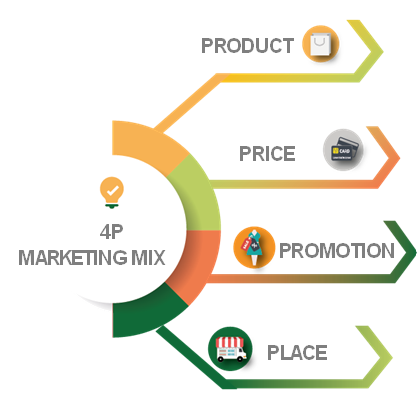
Figure 17 The 4Ps of Marketing Mix. Source: own composition.
Product (branding, types of nutrition and tourism, food hygiene)
In a farm, the "product" can be either an intangible service or a tangible good. A product should meet the specific expectations or needs of consumers. Products usually follow a natural life cycle and therefore the rural facilitator should strive to help the farmer in understanding and planning appropriately for each step, identify what his/her product expectations are, and foresees the benefits as well as the characteristics of the product itself. Once he/she understands the product itself, can continue to develop it to identify targeted visitors, consumers.
Branding
Rural facilitators can help farmers to distinguish their business from the competitors and clarify what it is their offer that makes a better choice for consumers. Their brand is built to be a true representation of who they are as a business, and how they wish to be perceived.
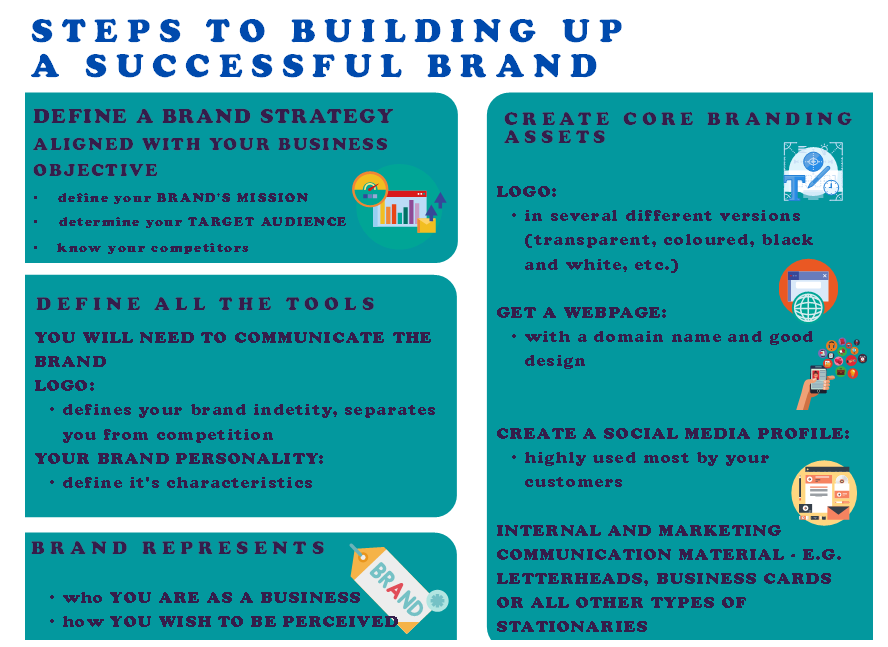
Figure 18 Steps to building up a brand. Source: https://99designs.com/
New nutrition and tourism trends
More and more people are allergic, and a lot of people are paying attention to what they are consuming. The rural facilitator needs to look for this and teach producers to develop a new product range accordingly.
Nutrition trends in 2020 (Source: Nutrition Hub, available at www.nutrition-hub.com/post/top-10-nutrition-trends-in-2020)
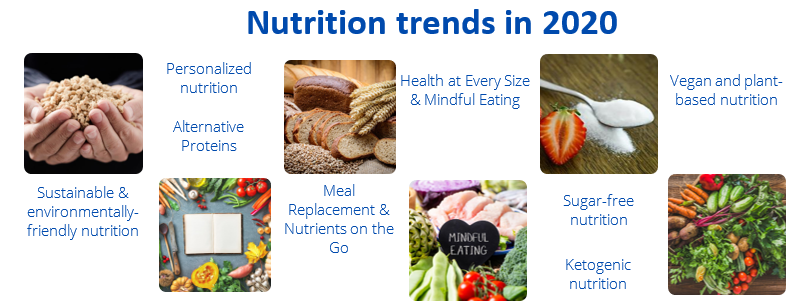
Figure 19 Nutrition trends in 2020. Source: own composition.
Sustainable and environmentally-friendly nutrition
Consumers prefer to purchase food products with little to no packaging, ideally from local and social businesses. They also increasingly choose regionally and seasonally grown fruits and vegetables and some of them even grow fruits and vegetables themselves at home or in community spaces.
Vegan and Plant-based Nutrition
The nutrition experts observe that vegan and plant-based nutrition will move to the mass market with increased demand for vegan convenience products, which ideally are packed in environmentally sustainable packaging. Vegan and plant-based diets will expand to fields of sports nutrition and clinical nutrition.
Personalised Nutrition
We observe an increase in allergies, intolerances, and the desire to optimize body performance: therefore, consumers choose to follow their health scheme more and more often by using (digital) health trackers, performance supplements (such as “advanced probiotics”), or diagnostic tests (DNA, biomarker, microbiome, metabolome).
Alternative Proteins
Consumers increasingly look for alternative proteins, especially convenient plant-based foods that replace cheese, sausages, and meat. According to our expert panel these products, however, will only succeed in case that they are natural, low in preservatives, and have a clean and clear ingredients list. Furthermore, the acceptance of clean meat will increase once no more fetal bovine serum is required to grow meat cells (apart from a competitive price, obviously).
Health at Every Size & Mindful Eating
Health at every size (HAES) and mindful eating are two of the important buzzwords here. HAES helps people of all sizes find compassionate ways to take care of themselves and is a result of the “fat acceptance and body positivity movement”. Mindful eating is a concept that describes actively paying attention to our food, moment by moment, without judgment. Both approaches focus on the individual itself and his/her intuition, leading to a sustainable, positive mindset.
Meal Replacement & Nutrients on the Go
Traditional food habits have progressively changed: In modern families, both parents work which leads in turn to full-time care of kids in kindergarten and schools. A couple of decades ago the most important meal in families was lunch – today it is dinner. Therefore, employees increasingly search for meal replacements and “nutrients on the go” supporting them during long working days. In addition, they want to be able to follow a healthy diet rich in nutrients. “Nutrients on the go” include solutions that provide foods or supplements based on natural ingredients that enhance the body's performance.
Ketogenic Nutrition
Ketogenic diets will be used by a broader range of consumers. For population groups such as athletes, there is a trend to reduce supplement intake and implement specific diets instead. A ketogenic diet, being one of those, is a high-fat, low- carbohydrate but normal protein (20% of energy intake) diet that forces the body to burn fats rather than carbohydrates to generate energy. The “classic” therapeutic ketogenic diet was developed for the treatment of pediatric epilepsy in the 1920s. Today its benefits are investigated in patients suffering from Multiple Sclerosis, Alzheimer’s, and Acne among others (Keto Kompass, Ulrike Gonder).
Sugar-free Nutrition
Parents are well-informed about the adverse effects of products high in sugar. Due to the desire of providing healthy eating habits, the anti-sugar movement will continue and needs to - according to our expert panel - be accompanied by evidence-based campaigns educating parents and children about sugar, sugar substitutes, and sweeteners.
New trends in tourism
Regarding the number of tourists who practice rural tourism, the trend is an upward one, while they seek a form of responsible or ecological tourism. At the same time, the tourists turn their attention to certain areas which offer unique and specific experiences, and consequently authentic ones, in which the promoted lifestyle is primordial. In this way, the globalised nature of mass tourism can be avoided.
Tourism and marketing
Smallholders need to be able to sell their products and create a livelihood for the family. Another opportunity for sales lies in tourism. In addition to the products of small producers, service packages can be ordered, with which both the producer and his product are included in the tourist cycle. That is why we consider tourism to be important as an opportunity to discuss in the marketing chapter. The producer may become an active participant in tourism services, but it needs to be prepared for this.
One very new approach to tourism is nanotourism, which provides an experience for tourists based on the environmental crisis on Earth: „Nanotourism is a constructed term describing a creative critique to the current environmental, social and economic downsides of conventional tourism, as a participatory, locally oriented, bottom-up alternative. “ (https://nanotourism.org/). It touches the full range of human senses, encouraging tourists to engage in manual, artistic activities.
According to the marketing theory, “customer segmentation is the process of dividing customers into groups based on common characteristics so companies can market to each group effectively and appropriately.”
In business-to-consumer marketing, companies often segment customers according to demographics that include: Age, Gender, Marital status, location (urban, suburban, rural), Life stage (single, married, divorced, empty-nester, retired, etc.)
Segmentation allows marketers to better tailor their marketing efforts to various audience subsets. Those efforts can relate to both communications and product development. Specifically, segmentation helps a company:
- Create and communicate targeted marketing messages that will resonate with specific groups of customers, but not with others (who will receive messages tailored to their needs and interests, instead).
- Select the best communication channel for the segment, which could be email, social media posts, radio advertising, or another approach, depending on the segment.
- Identify ways to improve products or new product or service opportunities.
- Establish better customer relationships.
- Test pricing options.
- Focus on the most profitable customers.
- Improve customer service.
- Upsell and cross-sell other products and services.
www.shopify.com/encyclopedia/customer-segmentation
In practice, the better the producer knows his customers, the better he can sell his products. For "marketer" producers, this is a self-evident process, as it receives face-to-face feedback from customers during markets and fairs. Anyone looking to sell through other sources needs to find the best way to segmentation: phone interviews, questionnaires, focus group meetings, paid targeted ads. The rural facilitator can help a lot in this process.
Several types of tourism can be defined (Sasu and Epuran, 2016):
Agritourism – this form of tourism uses the farm as the main place for activities, is organized by farmers, usually as a secondary activity, agriculture remaining their main occupation and source of income. The tourists spend the night in the peasants’ households and participate in the everyday farm chores actively.
Ethnic tourism – it is highly based on involving the locals, especially the minority population of a rural settlement, by displaying their way of life in front of tourists.
Ecotourism – tourism to be eco, it must fulfil certain conditions, such as: to help protect and preserve nature, to use local resources (both human and material), to have an educational purpose, the activities should have a less negative impact on the environment (Nistoreanu, Dorobanţu, and Ţuclea, 2011). Some of the eco touristic activities are hiking, skiing, biking, canoeing, trips to local communities where people can buy and learn about the traditional foods and drinks, visit the cultural attractions, etc.
Creative tourism – the tourist learns “new skills and undertake recognizably creative activities” (Cloke, 2007, p. 43). Moreover, UNESCO adds an important element, that is “creative tourism is travel directed toward an engaged and authentic experience”. (UNESCO, 2006, p.3).
Culinary tourism – food and wine routes – culinary tourism is part of cultural tourism, but because of the nature of its activities and principles, it can be perceived from a rural perspective, as well. The tourists’ main motivation for travelling is the desire to discover traditional dishes specific to a certain place. In her work on food, authenticity, and tourism, Sims (2009) argues that the food and drinks consumed by the tourists, but which are locally produced, play an important role in the development of both economic and environmental sustainability, especially by helping farmers produce and sell the foodstuffs.
Food hygiene
According to the Regulation (EC) No 852/2004 of the European Parliament and of the Council of 29 April 2004, the safety of the food chain has to be controlled from farm to fork, each step in the food production chain taking its responsibility to deliver a safe food product to the market. The safety is to be controlled based upon the principles of ‘Good Agricultural Practices (GAP), ‘Good Manufacturing Practices (GMP), and ‘Hazard Analysis and Critical Control Points (HACCP). This regulation is valid for all food production, including the production by the short food supply chain. (Nagyné Pércsi, 2018) However, in many European Union Member States, the reduced regulations are applied for marginal local production which allows small farmers to use traditional processing methods.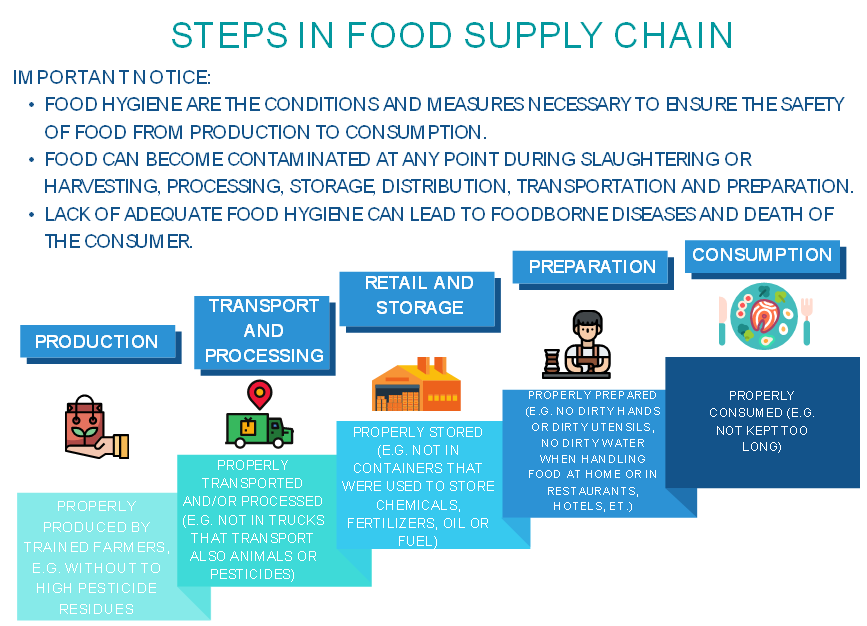
Figure 20 Steps in the Food Supply Chain. Source: WHO.
There is a lot to talk about food hygiene with producers.
They need to be made aware that without a good product one cannot do good marketing because the market will soon filter out the gimmick. The rural facilitator can make the producer aware of the responsibility that comes with placing food products on the market, as bad food can cause huge harm to the consumer. The producer should not be frightened, he should only be taught that the possibility of error can be filtered out with due care.
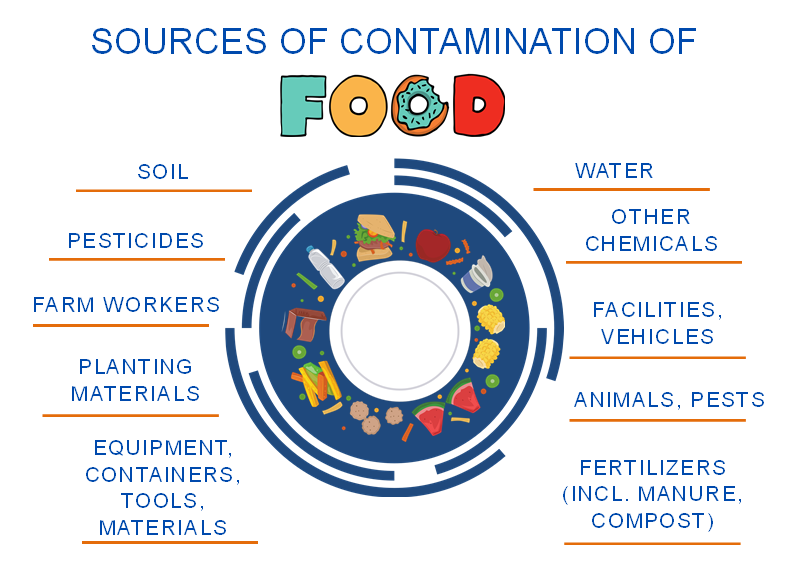
Figure 21 Sources of contamination of food. Source: http://www.fao.org/3/a-at509e.pdf.
Price - methods, strategies, balance between costs-oriented
and market-oriented methods
One of the most difficult tasks of a rural facilitator is to teach the producer how to set the right price. Since this task presupposes economic knowledge, it is worth calling for the help of common sense and the literature available on the internet, and even price calculators.
Price reflects the farmer’s expectations that consumers will pay a certain price for their products or services. Pricing can have a positive or negative impact on the sale of the products.
This depends more on how consumers perceive the value of this product than on the real value of the product itself. Therefore, if a product is priced higher or lower than the perceived value, it may not sell as expected. Therefore, it is important to understand what consumers perceive before the producer decides to set a price for a product. If the consumer's perception is positive, the product will likely sell even at a price higher than its real value. On the other hand, if the product has very little or no value to the consumer, it may be beneficial to underestimate the product just to make some sales.
Producers need to be made aware that it is worthwhile to calculate a price for a product on an annual basis, as for them the production of a cereal/vegetable/fruit product starts with the autumn ploughing of the previous year (in fact, years earlier in the case of crop rotation). The same applies to meat and dairy products.
In a very simplified formula: Selling Price = Cost Price + Profit Margin.
Here are some of the many costs that farmers need to take into account when determining market/selling price:
- Labour[1]: liveable wages, payroll taxes, housing needs
- Equipment: machinery, tractors, tools
- Inputs: seeds, compost, packaging, fertilizers
- Capital expenses: farmland, infrastructure, property taxes
- Overhead: maintaining buildings, professional services, administrative duties, advertising, marketing, wholesale costs
- Hidden costs: managing labour, accounting, working overtime/not getting paid
- Water quality issues: planting riparian buffers to help control nonpoint pollution and improve water quality
- Food safety upgrades
- Certifications (vtfarmtoplate.com/features/true-cost-of-local-food#.X5hwY4gzbIU)
There are three main aspects to consider when pricing:
- Demand (price cap)
- Costs (price cap)
- Competitors' prices (information point) (Marketing | Digitális Tankönyvtár, 27.10.2020)
At producer fairs, a price agreement is usually reached between producers. In the case of food hubs, the price is set jointly with the producers, the producer gives a discount to cover the fixed and staffing costs of the store, and then the store price will not be much higher than the market price. It is very important to pay attention to the fact that in the market the buyer likes to bargain and the producer can let him out of the price, but in the case of a shop, food hub this is not applicable, because the goods are sold at a fixed price in accounting.
Promotion
Promotion means disseminating the information about the product, product line, brand and company, service to the potential buyers with the intent to generate sales and develop brand loyalty.
Promotion refers to the marketing strategies and communication techniques used to review products/services to target customers. The promotion includes activities such as special offers, advertising, public relations, and also sales promotions.
The rural facilitator has to make aware the producers/farmers that any promotional channel used should always be suitable for their product or service, and also for the price. Marketing is different from promotion because promotion only refers to the communication aspect used in marketing.
Advertising
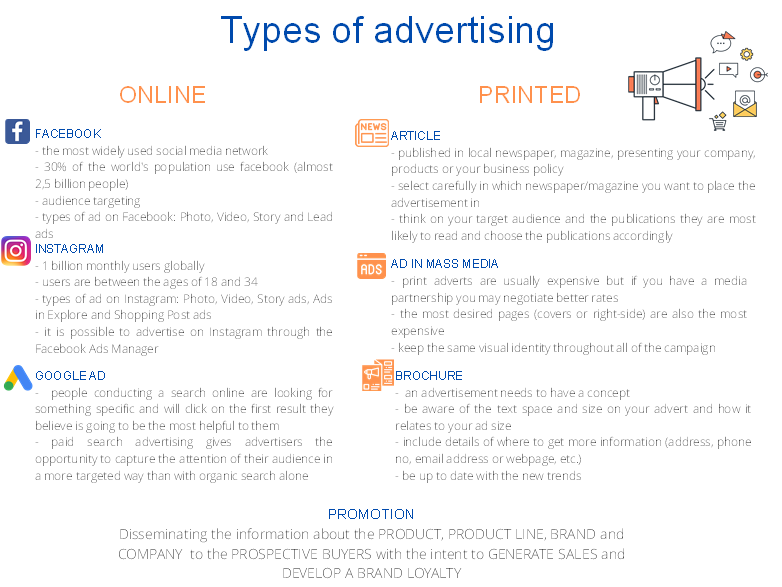
Figure 22 Types of advertising: Source: https://blog.hubspot.com/marketing/online-advertising.
Personal Selling (fairs, markets, festivals, etc.)
Smallholder markets are organized in different forms in each region. The rural facilitator can help producers map these. The great advantage of markets and fairs is that the product comes into direct contact with the buyer, he receives immediate feedback on, for example, the packaging, the physical aspect of the product, and even, if it is appropriate, the taste of the product, if tasting is possible.
At these fairs, festivals, and markets, a recurring customer base can develop, with loyal consumers looking for fresh, healthy, local products. Most often, an agreement is reached between the producers at the fairs about the prices, and they do not bid on each other out of honour either, because they will meet next time as well. The rural facilitator should draw the attention of producers to the legislation in force in the given region or country.
Sales promotion loyalty reward program
When to use sales promotion?
The goal of sales promotion is to increase demand for a particular product.
When you want to:
- launch a new product
- attract new clients
- stay competitive. Researching and analyzing your competitors will not only help you attract new clients but constantly improve your product and customer service.
- make existing customers buy more. It's always easier to make an existing customer buy more than attract new clients.
- sell during the off-season, by offering time-limited discounts, "1+1=3" campaigns, and other marketing tricks.
- run clearance campaigns, when dealers need to make room for a new collection, they often run total clearance campaigns when users can buy goods from old collections at extremely reduced prices.
Types of Sales Promotion
- Price deal. It is a temporary cost reduction.
- Loyalty reward program.This means that customers collect points or credits when they buy a product.
- Bonus-pack deal.It means that a customer can get more products paying the original price.
- These tactics aim to increase brand awareness. It means giving some items for free in exchange for personal information to use in further marketing.
- You can sell a product for the original price and give a coupon, which will make the next purchase 5% cheaper.
- Mobile couponing.It stands for coupons received on mobile phones via SMS. To get a discount, a customer needs to show the coupon on their smartphone.
- Choosing this promotion type, companies give a sample of the product.
Place
Placement refers to how the product or service will be made available to the consumer. An appropriate placement strategy will evaluate the best and most appropriate distribution channel for the product.
With a successful marketing strategy, you can expand your customer base and increase your profit.
Marketing is any activity that leads you to sell a product. When you decide what products to sell, what price to ask, where and how to sell them, and how to promote them, you are marketing. Your strategy is your means of doing something - how you will meet your objectives of selling this year’s products. Depending on the type and size of your farm, and whether you are farming full or part-time, you have several options for how to market your operation.
Organic Farming
Organic farming is a product strategy. Farmers select organic farming for several reasons, because they may believe in the concept of organic foods and/or because the consumers have demonstrated a willingness to pay more for organic food, which leads to a larger profit.
https://www.organicwithoutboundaries.bio/category/from-the-field/ there are a lot of very diverse examples.
Benefits of organic farming: Safer working conditions, less food and drinking water contamination, Greater biodiversity, Reduced leaking, Reduced erosion, and better water management, Low use of non-renewable resources (http://grolink.se/resources/oa/benefits-of-organic-farming/)
According to The Rodale Institute’s research program which involves nearly 40 years of organic/conventional farming comparisons. Among the many advantages, it has found that organic farming systems:
- yields match conventional yields after a five-year transition
- outperforms conventional farming in years of drought by up to 40%
- earns 3–6-time greater profit for farmers
- leaches no toxic chemicals into waterways
- uses 45% less energy
- releases 40% fewer carbon emissions
- water volumes percolating through soil were 15–20% higher than the conventional systems
- systems are more profitable than conventional ones.
Farmers' Markets
Selling at a farmer’s market is a distribution and sales strategy that is ideal if you are a small or medium-sized agricultural producer. It can also be a stepping stone to larger markets if you want to grow, but with the popularity of these markets, many farmers sell at a different market every weekend within a reasonable distance from their farms. It allows you to sell several types of produce, provide recipes and offer taste samples. Another benefit is that market operators or local communities handle much of the promotion, saving you time and money.
Food Hubs
The Food Hub is a food integrator that supports small and medium-sized producers, giving them a market. As a promoter of the short agri-food chain, the Food Hub brings together, on the same platform, local food producers. A food hub is a cooperative effort among farmers in a certain region. Using this model, you address your pricing, selling, and promotion marketing strategies. The hub manager handles the logistics of selling to the consumer or commercial customer and gives you a commitment to purchase a certain amount of your product. This marketing strategy allows smaller agricultural businesses to share and minimize risk, while also allowing them to compete as a group with large food wholesalers.
CONCLUSION
This chapter aims to introduce the rural facilitator into the wonderful world of basic marketing elements with 4 elements of the marketing mix, case studies, nutritional science, tourism innovations, personal product personalization techniques, to help small producers to work in the short supply chain as thoroughly as possible.
RESOURCES
https://trademark-search.marcaria.com/en/
https://www.who.int/foodsafety
https://www.vtfarmtoplate.com/features/true-cost-of-local-food#.X5hwY4gzbIU
https://www.mindtools.com/pages/article/newSTR_94.htm
https://www.brandingmag.com/2015/10/14/what-is-branding-and-why-is-it-important-for-your-business/
https://www.nutrition-hub.com/post/top-10-nutrition-trends-in-2020
https://blog.hubspot.com/marketing/online-advertising
https://sendpulse.com/support/glossary/sales-promotion
https://economictimes.indiatimes.com/definition/marketing-mix
https://www.investopedia.com/terms/b/brand.asp
https://www.sciencedirect.com/topics/food-science/food-hygiene
[1] It is very important to stress that producers often do not include their own labour in the price of the product. Of course, this is not a simple calculation, but the more products you can define, the easier it will be over time. We can suggest that the producer keep a work diary for a season, recording exactly how many hours a week he spends working and what, how many products he produced during that time. It must be averaged for the first time and then the producer realizes the value of working hours, as there are more labour-intensive products. Records are also important because they show how valuable your own product is.
Chapters
- Introduction
- Rural Facilitator
- Innovative short food supply chains
- Short food supply chain and ecological transition
- Business thinking for Rural Facilitators
- Marketing tips in short food supply chains
- Communication and conflict management for Rural Facilitators
- Leadership Skills
- Glossary
- References
- Authors and their organizations





